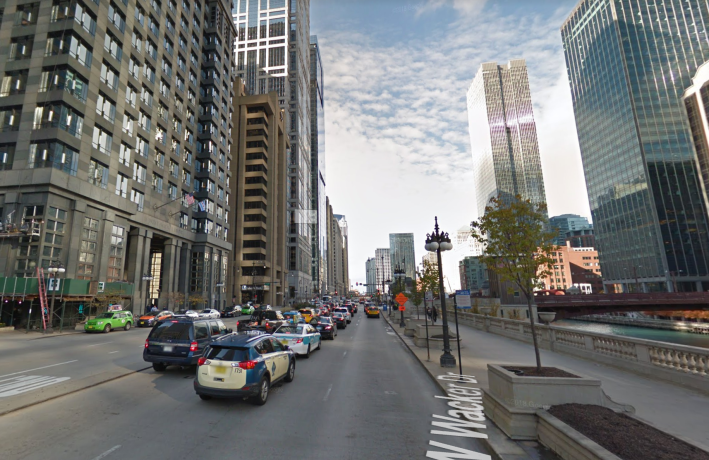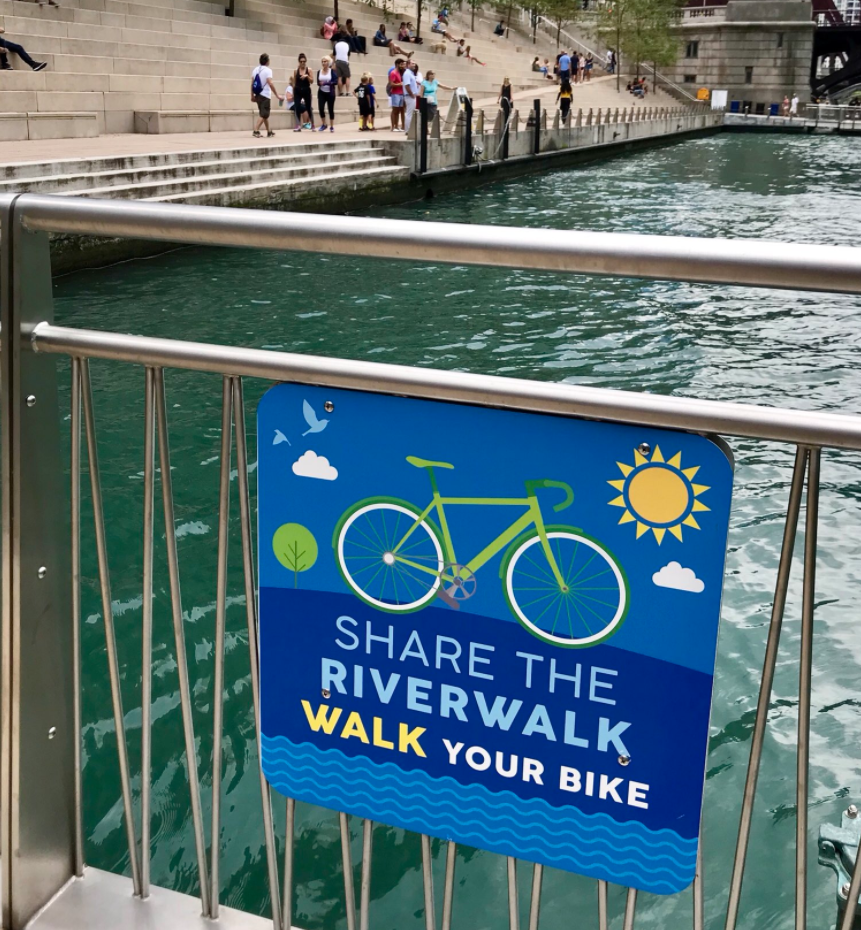New signs on the Chicago Riverwalk extension say “Share the Riverwalk: Walk your bike,” but you can disregard them.
Or, at least, you would be within your rights to ignore them and keep riding your bike, although other riverwalk users and police may believe that’s not the case, thanks to these misleading signs. (In fairness, the signs are nicely designed and feature a cool fixed-gear cycle.)
Granted, many sections of the riverwalk between State and Lake aren’t great places to ride a bike, given the sharp angles of the path’s turns as it goes around bridge houses, and the crowding that’s common in nice weather after work. And I’m certainly not suggesting you act like a total jerk and recklessly barrel through masses of people strolling, sunning themselves, and sipping wine.

But even when the Riverwalk is packed, I’m usually able to roll through it at roughly walking speed without endangering or upsetting anyone. If necessary, I'll Fred-Flintstone it or dismount. In fact, a person on a bike takes up less room than a person walking their cycle. If you’re uncomfortable with slow riding then, sure, you may prefer to immediately dismount when you enter a congested section of the path.
However, the signs suggest that it’s illegal to bike on the riverwalk. Even though that’s not the case, it’s possible that could result in some erroneous tickets from police who aren’t familiar with the rules. At the very least, the placards imply that you’re being selfish and not sharing the facility if you don’t dismount, even when the path isn’t crowded, which is an invitation for pedestrians to scold cyclists who are doing nothing wrong.
Moreover, the signs are hypocritical because when Chicago pitched the riverwalk project to the federal government to get an interest-free $99 million transportation loan, they described it as an enhancement for people on foot and bikes. The Riverwalk’s U.S. Department of Transportation’s webpage notes that it was supposed to “include… bicycle facilities” and that “the project [would] enhance safety for pedestrians with bicycle paths and pedestrian trails along the continuous promenade.” In other words, it’s conceivable that if the riverwalk wasn’t sold to the feds as something people could ride bikes on for transportation purposes, Chicago would have never gotten the money to build it.
It’s also worth noting that the entire riverwalk is marked on the city’s Chicago Bike Map as an off-street trail, i.e., something you’re allowed to bike on.

The Chicago Department of Transportation, which oversaw the construction of the riverwalk and created the bike map, has not yet responded to a request for comment.
Active Transportation Alliance director Ron Burke agrees that the new signs are wrongheaded. “We opposed [“Walk your bike”] signs from the beginning and still do,” he said. “We recommended a ‘Walk your bike when crowded’ policy instead.”
Sustainable transportation advocate Michelle Stenzel, who took the photo at the top of this post, proposed in a tweet another way to largely eliminate bike-ped conflicts on the riverwalk. “If there were a protected bike lane on Upper Wacker, bicyclists wouldn’t have to mix with pedestrians at all.” Indeed, a lane or two of the six lane road, which sits right above the riverwalk, could easily be converted without causing undue traffic congestion.

Burke says he’s in favor of looking into that idea. “We know [riverwalk] congestion has become a real issue and are eager to explore other options, including reallocating space on Upper Wacker.”
In the meantime, feel free to bike – at a safe speed, of course – on all parts of the riverwalk, with no apologies.





